How Often Is High Tide
The Short Answer:
High and depression tides are caused by the moon. The moon's gravitational pull generates something chosen the tidal forcefulness. The tidal force causes Earth—and its h2o—to bulge out on the side closest to the moon and the side farthest from the moon. These bulges of water are high tides.
Watch this video to learn nearly what causes tides! Click here to download this video (1920x1080, 103 MB, video/mp4).
High tides and low tides are caused by the moon. The moon's gravitational pull generates something called the tidal force. The tidal force causes Earth—and its h2o—to bulge out on the side closest to the moon and the side farthest from the moon. These bulges of h2o are high tides.

Loftier tide (left) and low tide (right) in the Bay of Fundy in Canada. Image credit: Wikimedia Commons, Tttrung. Photo past Samuel Wantman.
Equally the World rotates, your region of Earth passes through both of these bulges each day. When you're in one of the bulges, y'all feel a high tide. When you're non in ane of the bulges, you experience a low tide. This cycle of two high tides and two low tides occurs most days on most of the coastlines of the globe.
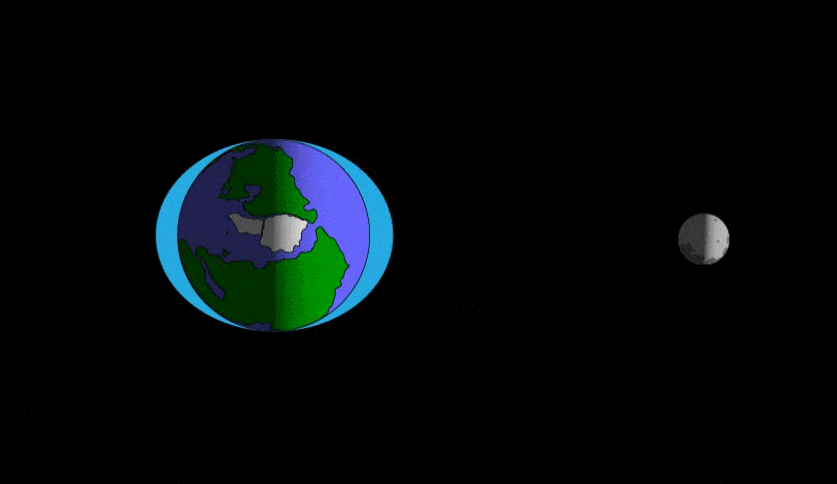
This blitheness shows the tidal strength in a view of Earth from the Northward Pole. As regions of Earth pass through the bulges, they tin can experiences a high tide.
More About Tides
Tides are really all about gravity, and when we're talking well-nigh the daily tides, information technology's the moon's gravity that'due south causing them.
Every bit Earth rotates, the moon's gravity pulls on different parts of our planet. Even though the moon only has about one/100th the mass of Earth, since information technology's so close to u.s.a., it has enough gravity to movement things effectually. The moon's gravity even pulls on the land, but not enough for anyone to tell (unless they utilise special, actually precise instruments).
When the moon'due south gravity pulls on the water in the oceans, nonetheless, someone's spring to notice. Water has a much easier time moving effectually, and the water wants to bulge in the direction of the moon. This is called the tidal forcefulness.
Considering of the tidal force, the water on the side of the moon ever wants to bulge out toward the moon. This bulge is what we call a high tide. As your function of the Earth rotates into this bulge of water, you lot might experience a high tide.
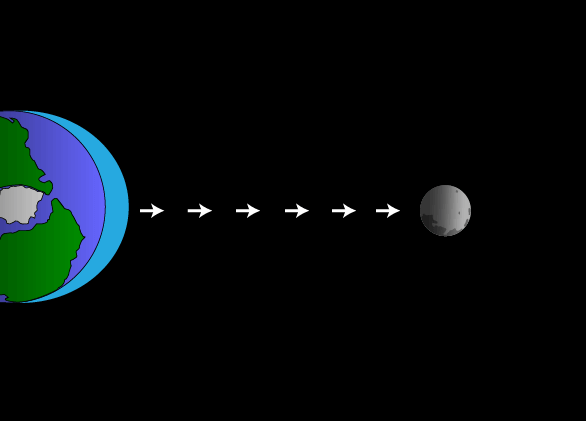
An illustration of the tidal force, viewed from Earth'south Due north Pole. Water bulges toward the moon considering of gravitational pull. Note: The moon is non actually this close to Earth.
One thing to note, yet, is that this is just an explanation of the tidal forcefulness—not the actual tides. In real life, the World isn't a global sea, covered in an fifty-fifty layer of h2o. There are 7 continents, and that land gets in the style. The continents forestall the water from perfectly post-obit the moon'due south pull. That'south why in some places, the divergence between high and depression tide isn't very big, and in other places, the difference is drastic.
That explains the kickoff high tide each day, but what well-nigh the 2d loftier tide?
The body of water also bulges out on the side of Earth opposite the moon.
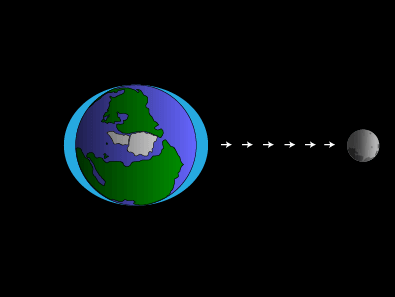
The tidal force causes water to bulge toward the moon and on the side opposite the moon. These bulges represent high tides.
Expect, what?
If the moon'southward gravity is pulling the oceans toward information technology, how can the body of water likewise burl on the side of Earth abroad from the moon? Information technology does seem a piffling weird. It's all because the tidal force is a differential forcefulness—significant that it comes from differences in gravity over Earth's surface. Here's how it works:
On the side of Earth that is straight facing the moon, the moon's gravitational pull is the strongest. The water on that side is pulled strongly in the direction of the moon.
On the side of Earth uttermost from the moon, the moon's gravitational pull is at its weakest. At the centre of Earth is approximately the average of the moon'south gravitational pull on the whole planet.
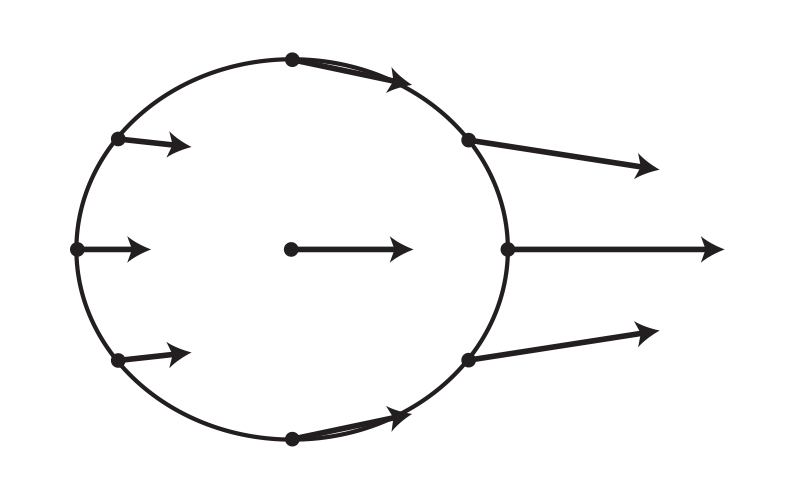
Arrows represent the strength of the moon's gravitational pull on Earth. To get the tidal strength—the forcefulness that causes the tides—we decrease this average gravitational pull on Earth from the gravitational pull at each location on Earth.
To get the tidal forcefulness—the force that causes the tides—we subtract this average gravitational pull on Earth from the gravitational pull at each location on Earth.
Tidal force =
moon's gravitational pull in a specific location on Globe —
moon's average gravitational pull over the whole Earth
The issue of the tidal forcefulness is a stretching and squashing of Globe. This is what causes the 2 tidal bulges.
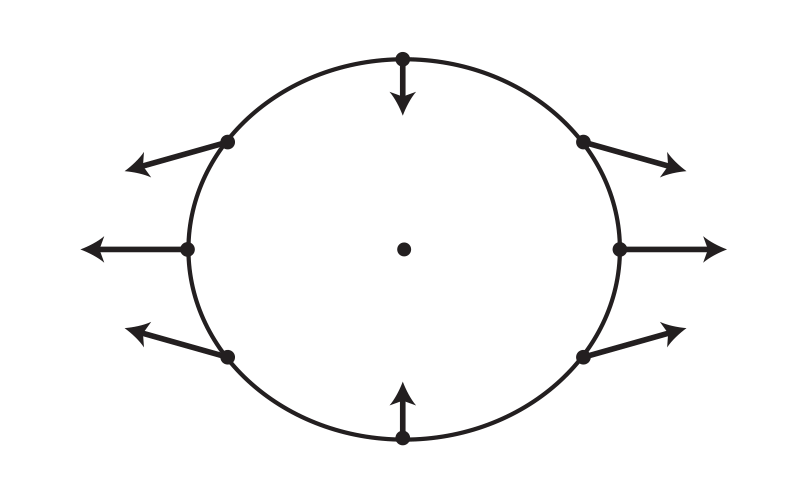
Arrows stand for the tidal force. Information technology's what's left over afterwards removing the moon's average gravitational pull on the whole planet from the moon'south specific gravitational pull at each location on Globe.
These two bulges explain why in one day there are two high tides and two depression tides, as the Earth's surface rotates through each of the bulges once a twenty-four hours.
Does anything else affect tides?
The Sun causes tides merely like the moon does, although they are somewhat smaller. When the earth, moon, and Sun line upwardly—which happens at times of full moon or new moon—the lunar and solar tides reinforce each other, leading to more farthermost tides, chosen jump tides. When lunar and solar tides human activity against each other, the event is unusually pocket-size tides, chosen neap tides. There is a new moon or a full moon well-nigh every 2 weeks, so that's how often we run across large leap tides.
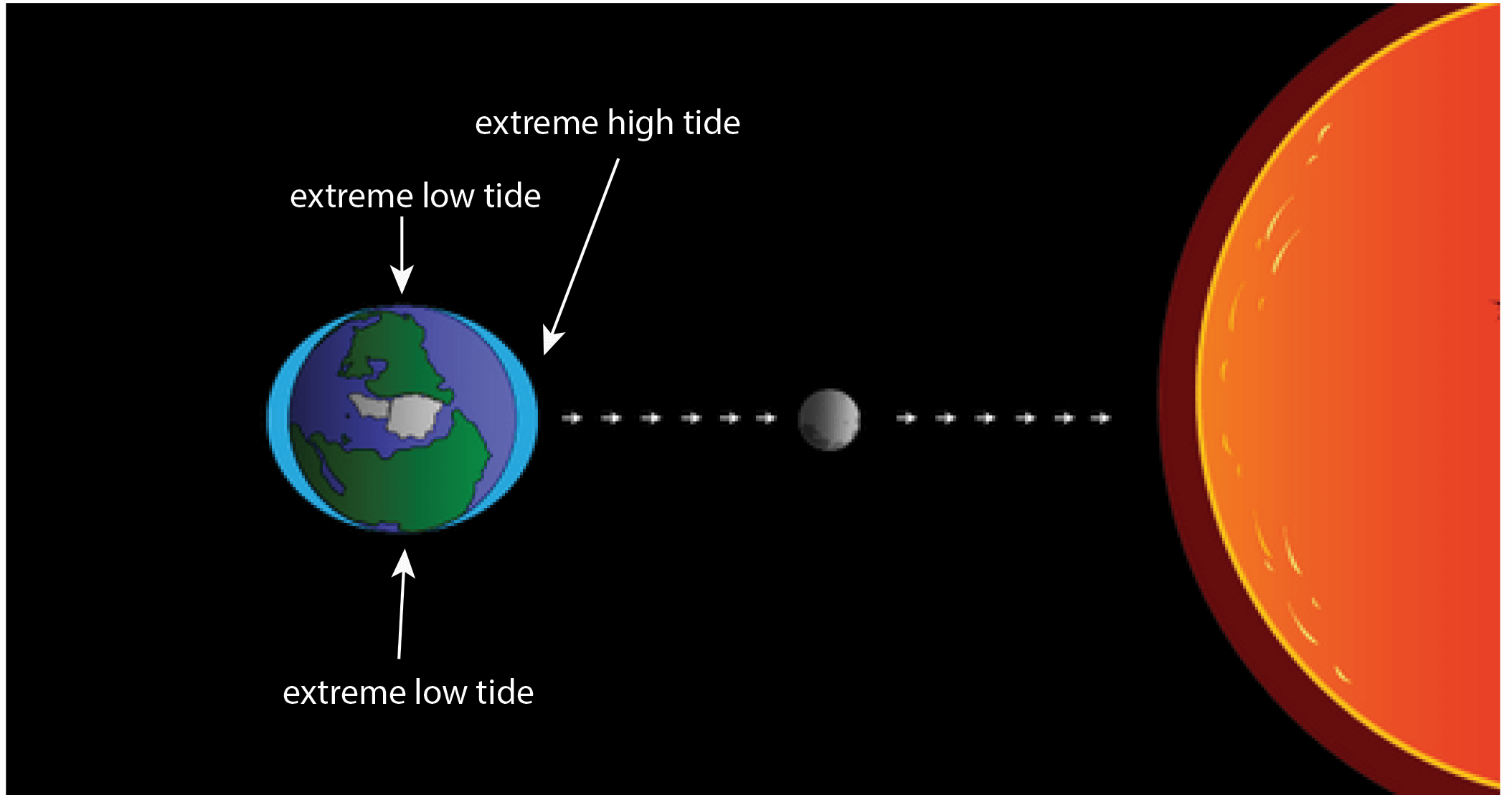
When the gravitational pull of the Lord's day and moon are combined, you become more farthermost high and depression tides. This explains high and low tides that happen about every two weeks. Annotation: this effigy is not to calibration. The Sun is much bigger and farther abroad.
Air current and weather patterns also can bear upon h2o level. Strong offshore winds can motion water abroad from coastlines, exaggerating low tides. Onshore winds tin push button water onto the shore, making low tides much less noticeable.
Loftier-pressure weather systems can push downwards ocean levels, leading to lower tides. Low-force per unit area systems—brought on by strong storms and hurricanes—tin can cause tides than are much higher than predicted, so sentinel out!
How Often Is High Tide,
Source: https://scijinks.gov/tides/
Posted by: daviskniout.blogspot.com


0 Response to "How Often Is High Tide"
Post a Comment